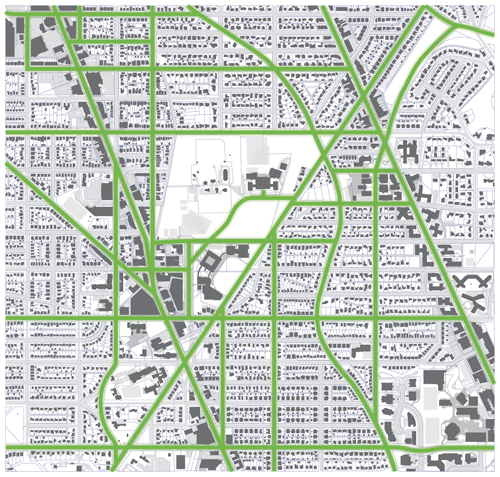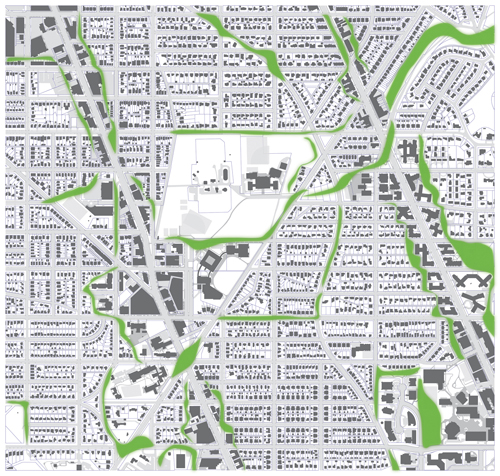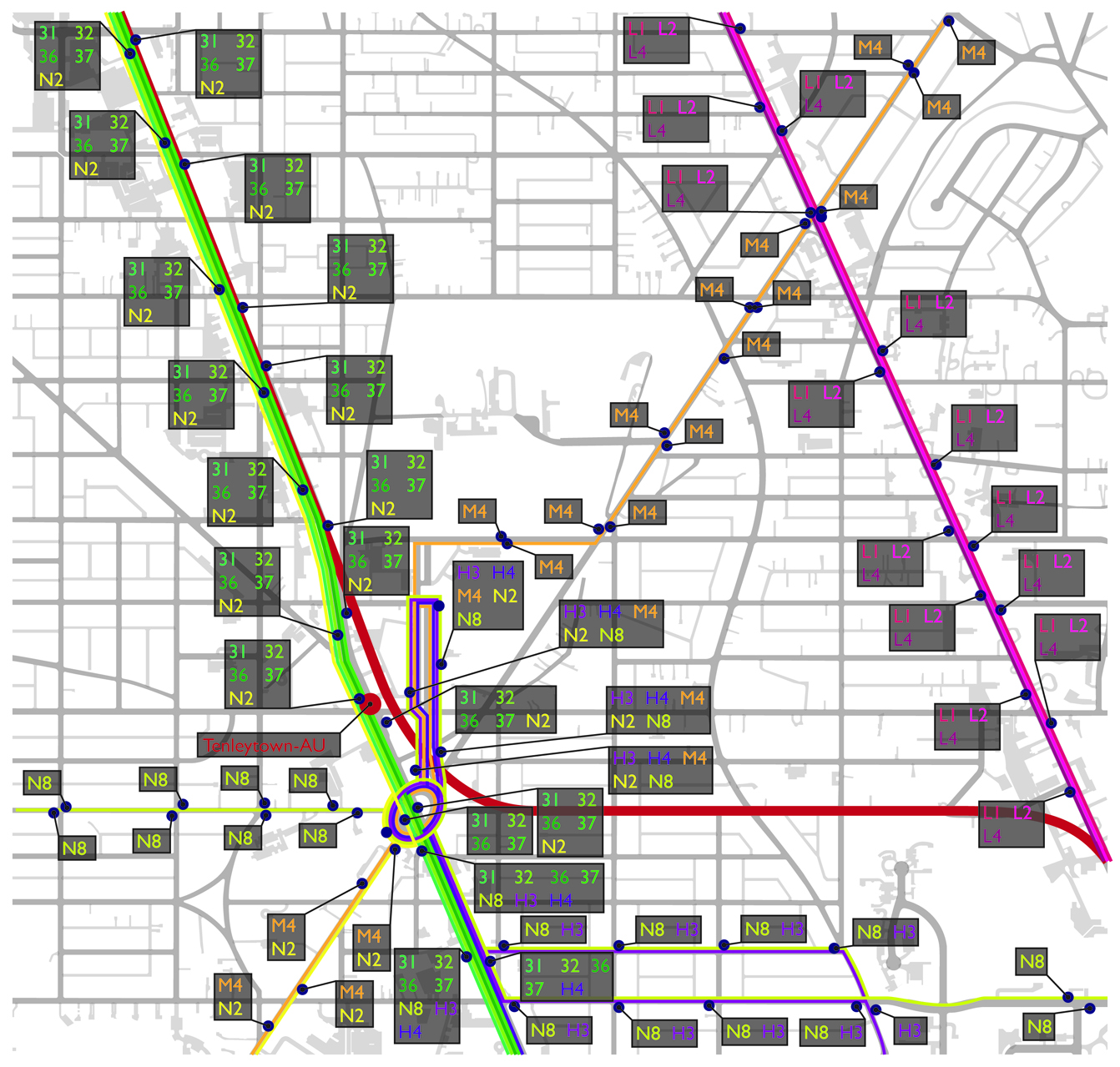This is a long post, so click through…
Tag: van ness
Reno Park Update 100302: Lynch
When he wrote the book, Lynch interviewed a wide array of urbanites to understand how laymen organized, remembered, and navigated their neighborhoods and the city at large. He found that most individuals organized their cities with five archetypal patterns: paths, edges, nodes, districts, and landmarks. One caveat of this induction is that for each person, the definitions vary. The perception of paths depends on a destination and the familiarity with the neighborhood. On the other hand, the designation of edges and districts tends to be more consistent among locals. So, unlike my neighborhood maps, I drew more on personal experience, while also searching for objective measurements.
For example, the paths map (below) is based on the map of locality. The route to a front door might be unique, but there’s an appreciable amount of travel along certain major roads. So, I picked out the bigger paths. I’m willing to bed that most people would see these as frequent routes. Note that this does account for vehicle travel.
The second element is the edge. Edges form in gaps and hard shifts between building types. Parks and hills constitute much many of the edges unrelated to zoning. These breaks are some of the more prominent physical characteristics in a city, and I believe they encourage neighborhood division like nothing else.
OK, keep going, there are three more elements…
Reno Park Recap: Giving Northwest a Bad Name
Loyal readers of цarьchitect probably know that I hate the official name of the neighborhood I grew up in, North Cleveland Park “Wakefield.” Hopefully, that name will finally die. But my grouchiness about this coincided with an interest in the way that architects determine, delineate, and represent the concept of place. The goal of renaming an insignificant neighborhood in DC did dovetail nicely with my less modest plans to overturn planning and real estate practice.
So, the stupid name I did not know until I was 23 forms the starting off point for this discussion. That name lacks the lacecurtain cachet of “North Cleveland Park” or the actual uniqueness of “Tenleytown.” It’s a white-bread name reminiscent of too many other suburban developments. And, in fact, most of the area West of Connecticut Ave, North of Albemarle St., and East of Nebraska Ave was developed shortly before World War II and is one of the last areas to be developed as a tract in DC.
Because this name and others in the area came with the developments, neighborhood names tend to be bounded by major roads. Yet the centers of community and busy commercial areas. So, residents have ended up with indistinct locations bearing forgotten names and very popular ones with no names but provisional monikers, like “Comet Corner” and “Van Ness.” Or, according to City Paper, the area consists of Upper Caucasia, Connecticut, and Subarubia.
People have been attempting to name the area between Chevy Chase and Cleveland Park for over a century. Tenleytown may have grown up around John Tennally’s Tavern, but family names like Nourse and Dryer have disappeared from maps. In the late 1900s, the first developers came along and tried to add Armsleigh Park, Colorado Heights, Mount Airy, and Gizor. What seems to make a difference in whether the names stuck or not is whether the neighborhood has a clear social and commercial center. Tenleytown and Georgetown have such places. Forest Hills and AU Park do not.
Continues
Continue reading ➞ Reno Park Recap: Giving Northwest a Bad Name
Reno Park Update 091212B: Finding Place
So in the last post, I pointed out that it was easiest to demonstrate that some location is a place by showing the density of people there. That’s what this map is. It’s an imprecise but useful tool to map and note the actual behaviors of pedestrians in the T-T area. I’ve made a point of making it blurry and gradated. There are not borders, so much as dips in circulation and public activity that result from the popularity of one area and the amount of effort pedestrians are willing to exert to get from one place to another.
Take, for example, Friendship Heights. Most people arrive by Metro or driving to the retail district. But within only two or blocks of that hub of activity, the circulation patterns change: there are fewer people and they are generally more local. The walkable distance matters more. It’s clear that the locality ends, even if it is slight and gradual.
The character of the architecture changes slightly as one travels south on Wisconsin. It’s shorter, somewhat dinkier. But at Fessenden Street, the entire block is suddenly small, two-story local retail. It looks like little to the north, but also seems slightly different from Tenleytown, up a steep hill to the south. Someone who lived a block to the south would feel like it might be part of Tenleytown, and someone who lives a block to the north might feel it’s Friendship Heights. This is hard to define; just like foot traffic, it comes in gradients. However, due to its higher pedestrian traffic, small public park, and consistent look, I would argue it is effectively a between-place. So let me show you what I’ve come up with:
Reno Park Update 090804A: Transit Radii
I’m still working on the buildings and pedestrian maps, but I took a break to chart out the public transportation resources. I’ve included all public transportation resources, but not AU shuttles or the W45/47. Those aren’t accessible to 90% of potential park users, so I’m not interested. So, to start, here’s a route map. Clearly, it gets kind of insane around Tenleytown.
Note: These drawings are in an Adobe CMYK color space, so may look wacky on some computers.
So that’s a good beginning. These are obvious facts. Under the fold is an analysis of the walksheds for each stop, station, and line.
Soapstone Valley gets blogged!
North of Tilden: Old wounds

I. The city has declared that they will begin construction of the new Freelon-Group-designed library in September. However, out on the Tenleytown Listserv, discussion flared up when it became clear that the department of economic development was asking the architect to add structural columns that could support multistory residential. This practice is not uncommon, but it would be a wasteful expenditure if the Tenleytown Historical Society succeeds in landmarking the school, and adding to the structure becomes more difficult. Both properties sit on the same lot.
II. The HPRB has agreed to review a preservation application for the 1925 elementary school. Built by the city architect, Albert Harris, it’s a decent example of the stripped-down Beaux-arts Georgian style he developed for the rapid expansion of public facilities in the early 20th Century. Although it was the first of all the schools built in the area, I don’t see how the 84-year-old school merits perpetual legal protection, at least not at this point. Especially considering that the building is not in any danger of demolition or permanent alteration. Moreover, landmarking could seriously delay the much-needed renovation of the aging school needlessly.
III. The department of education is proceeding, however, with the development. They’ve hired Devrouax + Purnell to design a wing to the west of the current building. Part of the planning framework requires that DP respect the historical structures of the area. I have no doubt that they will. Their work in DC has been humane and sensitive, while also adding innovating modern elements. Freelon and DP’s buildings will be coups for the architecturally stagnated area, so it’s in the neighborhood’s interest to support their work.
IV: On the site of the former Oakcrest School at 4101 Yuma Street, a new religious center for women and girls will be opening this fall. The Yuma Study Center, a vaguely defined but Opus-Dei-affiliated religious institution will itself be renovating and expanding the old Bon Secours covenant. The current structure is dilapidated, so renovation will be welcome, once I can figure out exactly what the institution does.
Van Ness: This past weekend saw the second-ever farmers’ market on the plaza in front of UDC. The market is a twofer fer the residents of condograd across the street, putting the large plaza to use and getting farm-fresh goods onto a public street.
Hawthorne: The Post covers the ongoing slapfest in the very northern neighborhood of Hawthorne, a small collection of 1950s houses that was built in the fashion of the times: without sidewalks. DC has been improving and adding sidewalks throughout the city, improving pedestrian safety and encouraging walking, however, some residents of the area northeast of Utah Avenue won’t have any of that filthy urban nonsense. They moved there because they wanted to be in DC without being in the city.
What, they stayed in DC for the schools? Or for the lack of voting rights?
The arguments against sidewalks sort of tumble out of opponent’s mouths, with all kinds of illogic. This is like country in the city, yes, and a ranch house makes your .2 acre lot a ranch. Nobody walks around here, uh, ever wonder why? We need curbs, not sidewalks, so pedestrians can’t get out of the way of cars? Lastly, the venerable, but that’s the way it’s always been! makes its appearance, proving opponents to be examples of a certain five-letter acronym. You can hear how literally incoherent their arguments are in this video.
On the other hand, there are almost as many proponents, since many residents do see the public obligation to make the streets safe and accessible for all modes of traffic. It’s heartening to see proponents of reasonable growth out and advocating their position. There’s not much of a worry that Hawthorne will become infected with the dread contagion of urbanism, since it’s pretty far from any sort of rapid transit and unsuitable for larger growth. It’s always going to be a side neighborhood, one whose character will not be negatively altered by allowing people to walk comfortably around their neighborhood.
Eatable Things: Italian Pizza Kitchen

Veazey Walgreens
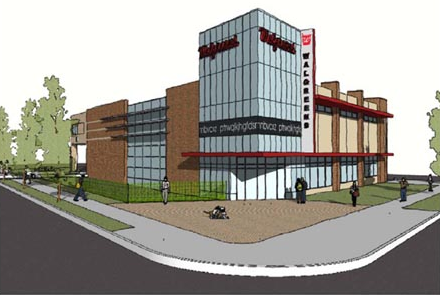
Seen here is the new Walgreens in Van Ness, at Veazey & Connecticut. A big improvement on the gas station that’s there, and an even bigger improvement over the previous plans. In terms of land use, the site would be better as a multistory building, and not as another chain convenience store, but it’s also limited by zoning.
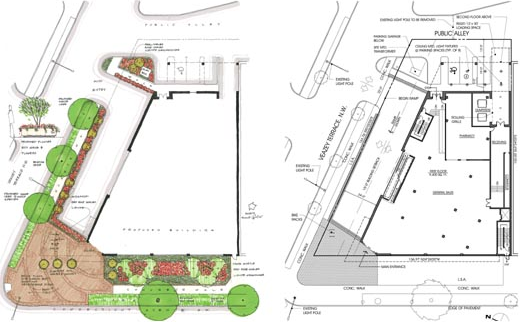
Designed by Rust|Orling, I think the building is a really poor imitation of a mid-mod style, an eyesore in a place where we don’t need any more. R|O are otherwise a good firm with a keen ability to manifest architectural diversity, but it looks like modern architecture is not their strong suite. They’re also restoring the art deco Walgreens in Cleveland Park and are the designers of Potomac Yards.
Construction has not begun, and these are working renderings.
Fort Reno project 090424: Topography
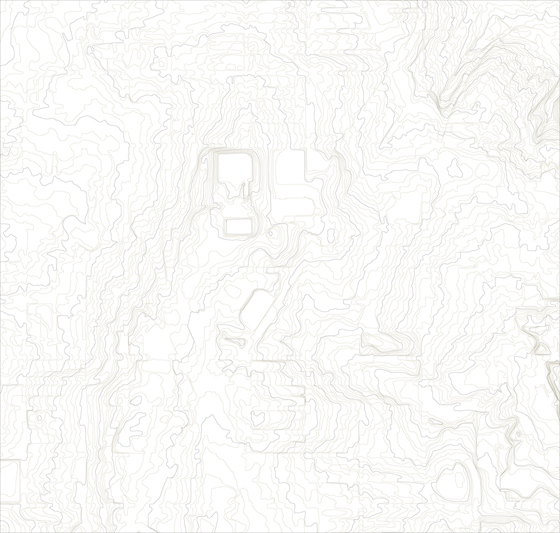
After the fold, there are other, cooler maps that show height using shading.
